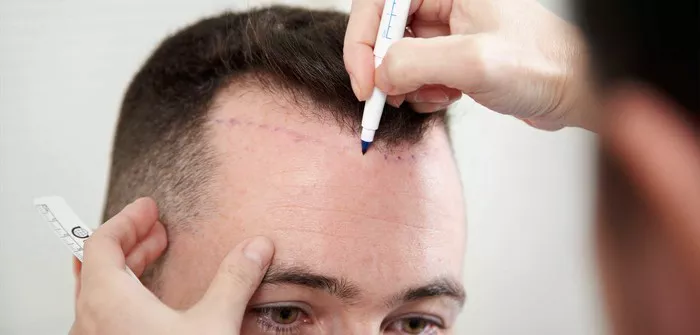Undergoing a hair transplant is a transformative journey towards regaining confidence and a full head of hair. As individuals embark on this path, understanding the healing process is crucial for managing expectations and ensuring optimal outcomes. In this article, we explore the various stages of healing after a hair transplant, providing insights into the duration and factors that contribute to a successful recovery.
The Initial Days: Immediate Post-Operative Care
The immediate days following a hair transplant are critical for ensuring the success of the procedure. Patients are advised to follow specific post-operative care instructions provided by their surgeon. These instructions typically include:
1. Graft Protection: Patients are often instructed to avoid touching or scratching the transplanted area to prevent dislodging the grafts. Special care is taken to protect the grafts during the initial healing period.
2. Avoiding Strenuous Activities: Rigorous physical activities, including heavy lifting and intense exercise, are generally discouraged during the first few days to minimize the risk of trauma to the grafts.
3. Medication Compliance: Patients are prescribed medications, including antibiotics to prevent infection and anti-inflammatory drugs to manage swelling. Adhering to the prescribed medication regimen is crucial for a smooth recovery.
The First Week: Managing Initial Discomfort
During the first week post-transplant, patients may experience some discomfort, swelling, and redness in the transplanted area. This is a natural part of the healing process, and it’s essential to:
1. Follow-Up Appointments: Many surgeons schedule follow-up appointments within the first week to assess the healing progress, remove any sutures if necessary, and address any concerns the patient may have.
2. Gentle Cleansing: Patients are often provided with instructions for gentle cleansing of the transplanted area. Following the recommended cleansing routine helps prevent infection and promotes healing.
3. Avoiding Sun Exposure: Direct exposure to sunlight is generally discouraged during the initial healing phase. Wearing a hat or using sunscreen can help protect the sensitive scalp.
The First Month: Initial Signs of Healing
As the initial discomfort subsides, patients may begin to notice the first signs of healing. However, it’s crucial to recognize that the transplanted hair undergoes a shedding phase during the first few weeks. This shedding is a normal part of the process, and new hair will gradually emerge in the coming months.
1. Shedding and New Growth: Patients may observe the shedding of transplanted hair within the first month. This is often referred to as “shock loss,” and it’s a temporary phase. New growth usually begins to emerge within a few months.
2. Resuming Normal Activities: Depending on individual healing progress, many patients can gradually resume regular activities, including light exercise, by the end of the first month. However, it’s essential to follow the specific guidelines provided by the surgeon.
3. Patience and Understanding: Patience is key during this phase. Understanding that the shedding is part of the natural process helps manage expectations and alleviate any concerns about the initial appearance of the transplanted area.
The First Three to Six Months: Visible Progress
As the healing process continues, patients typically see visible progress in terms of hair growth. However, it’s important to note that the hair is still maturing, and full results are not yet realized. During this time:
1. New Hair Growth: The transplanted hairs gradually transition from the resting phase to the growth phase. Patients may observe new hairs emerging, and the overall density of the transplanted area improves.
2. Regular Follow-Up Visits: Surgeons often schedule follow-up appointments during this period to monitor progress, address any concerns, and make adjustments if necessary.
3. Styling Options: Patients may have more flexibility in styling their hair as the transplanted area becomes less sensitive. It’s essential to follow the surgeon’s recommendations for hair care products and styling practices.
Beyond Six Months: Continued Improvement
The six-month mark is a significant milestone in the healing process, but continued improvement is expected over the next several months. By this time:
1. Maturation of Transplanted Hairs: The transplanted hairs continue to mature, and their texture becomes more similar to the surrounding natural hair.
2. Enhanced Density: The overall density of the transplanted area continues to improve, contributing to a more natural and fuller appearance.
3. Final Results: While significant progress is visible, the final results of a hair transplant are typically realized between 12 to 18 months after the procedure. Patience remains crucial as the transplanted hairs achieve their full growth potential.
Factors Influencing Healing Time
Several factors can influence the duration of healing after a hair transplant:
1. Individual Healing Response: Each individual’s body responds differently to the transplant procedure. Genetic factors, overall health, and the body’s ability to heal all contribute to the variability in healing times.
2. Post-Operative Care: Adhering to post-operative care instructions is paramount. Patients who follow the recommended guidelines for cleansing, medication, and lifestyle adjustments tend to experience smoother recoveries.
3. Graft Survival: The successful outcome of a hair transplant relies on the survival of the transplanted grafts. Ensuring proper care, protection, and minimizing activities that could compromise graft viability contribute to a successful recovery.
See Also: Hair Transplant Surgery: Does It Fall Out After Years?
Conclusion
Understanding the timeline and various stages of healing after a hair transplant is essential for individuals considering or undergoing the procedure. By following post-operative care instructions, being patient during the shedding phase, and staying in communication with the surgeon, patients can navigate the healing process confidently. The transformative results of a hair transplant become increasingly evident over time, showcasing the success of the procedure and the restoration of a fuller, more confident head of hair.


